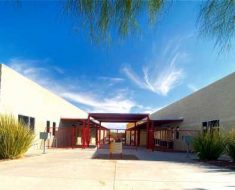
A major study published in The BMJ earlier this year showed that people who integrate a lot of ultra-processed foods into their diet have a higher risk of cancer.
What this might suggest is that eating a healthful diet might work, to some degree, in a protective way.
In the past, some studies have claimed that eating a diet rich in fruits and vegetables could lower a person’s risk of breast cancer. Others, however, have argued that the evidence in favor of this association remains inconclusive.
But recently, a team of researchers from the Harvard T. H. Chan School of Public Health in Boston, MA, has conducted a large-scale, long-term study investigating in more detail the relationship between fruits and vegetables in a person’s diet and their risk of breast cancer.
This new study not only suggests that eating a lot of fruits and vegetables can lower breast cancer risk — and the risk of developing aggressive tumors, no less — but it also explains how much fruits and vegetables someone should ideally eat per day in order to offset risk.
“Although prior studies have suggested an association [between fruit- and vegetable-rich diets and cancer risk], they have been limited in power, particularly for specific fruits and vegetables and aggressive subtypes of breast cancer,” notes first author Maryam Farvid.
“This research provides the most complete picture of the importance of consuming high amounts of fruit and vegetables for breast cancer prevention.”
The study’s findings can now be read in the International Journal of Cancer.

The importance of fruit and veg
Farvid and colleagues collected diet- and health-related data from female participants of two large population studies: 88,301 women from the Nurses’ Health Study (which started in 1980), and 93,844 women form the Nurses’ Health Study II (which began in 1991).
Data mapping the participants’ dietary habits were collected via questionnaires filled in every 4 years, while information regarding other risk factors for breast cancer — including age, body weight, smoking habits, and a family history of cancer — was obtained through questionnaires submitted every couple of years.

The researchers’ analysis suggested that women who ate more than five and a half servings of fruits and vegetables daily had an 11 percent reduced risk of developing breast cancer, compared with women who ate two and half servings or under of fruits and vegetables.
Specifically, one serving consisted of one cup of raw leafy vegetables, half a cup of either raw or cooked vegetables, or half a cup of raw or cooked fruit.
Farvid and team also wanted to know whether eating fruits and vegetables was associated with different degrees of risk reduction in different types of breast cancer. To achieve this, they also conducted a differential data analysis, splitting cancer type by receptor status and molecular subtype.

Lowered risk of aggressive cancer tumors
The researchers were able to observe that a diet rich in fruits and vegetables appeared to be associated with a particularly lowered risk of developing aggressive types of cancer tumors, which grow and spread fast and are often resistant to traditional treatments, such as chemotherapy.
These include estrogen receptor-negative breast cancer, HER2-enriched breast cancer, and basal-like cancers, which are similar to another aggressive tumor type: triple-negative.
Farvid and colleagues had already conducted a study indicating that high fiber intake was associated with a diminished risk of breast cancer. However, this study suggests that the protective effect associated with fruits and vegetables is independent of their fiber content.
So what does this mean? According to the researchers, this suggests that fruits and vegetables contain other nutrients, such as antioxidants, that may contribute to offsetting cancer risk.
“While a diet with lots of fruits and vegetables is associated with many other health benefits, our results may provide further impetus for women to increase their intake of fruits and vegetables,” says senior author Heather Eliassen.
Source: Read Full Article





